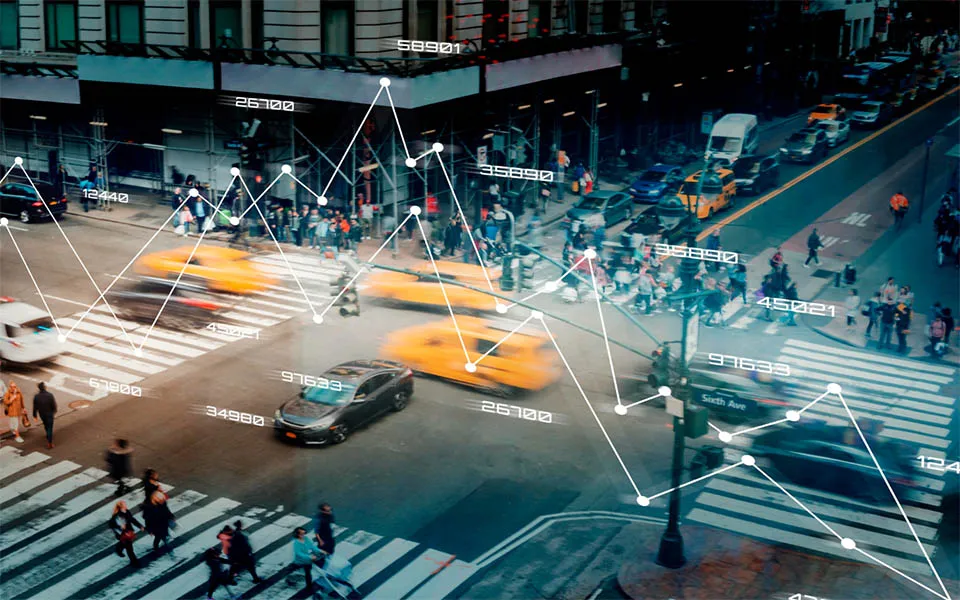Smart Mining: Transforming the Mining Industry through Technological Innovations
Mining has been an essential part of human civilization since ancient times, providing valuable resources necessary for various industries and economic development. However, traditional mining practices have often been associated with significant environmental impacts, safety concerns, and inefficiencies. In recent years, the mining industry has witnessed a transformation with the emergence of “Smart Mining” – a concept that incorporates cutting-edge technologies to enhance operational efficiency, safety, and sustainability.

Smart Mining is a modern approach that leverages advanced technologies, data analytics, and automation to optimize mining processes, minimize environmental impacts, and improve worker safety. This concept encompasses a range of innovative solutions that transform traditional mines into intelligent, interconnected systems capable of making data-driven decisions in real-time.
Key components of Smart Mining include:
1. Internet of Things (IoT) and Sensors:
IoT plays a pivotal role in Smart Mining by connecting physical devices and sensors to the internet, facilitating seamless data exchange. Sensors deployed in mines collect real-time data on various parameters, such as temperature, air quality, equipment health, and worker location, providing valuable insights for decision-making and risk assessment.
3. Artificial Intelligence (AI) and Machine Learning (ML):
AI and ML algorithms make Smart Mining systems smarter over time. By continuously learning from data, these technologies enhance efficiency, enable predictive maintenance, and optimize resource allocation, reducing overall operational costs and increasing productivity.
2. Big Data and Analytics:
The massive volume of data generated by IoT devices is processed and analyzed using advanced data analytics tools. These analytics solutions identify patterns, trends, and anomalies, enabling mining companies to optimize their operations and predict potential equipment failures or safety hazards.
4. Automation and Robotics:
Smart Mining introduces automated machinery and robotics into the mining process, reducing the need for human intervention in hazardous environments. Automated drills, trucks, and loaders increase operational efficiency while minimizing the risk of accidents.
5. Remote Monitoring and Control:
Remote monitoring and control systems allow mining operators to oversee operations from a centralized location, promoting greater flexibility and efficiency. Real-time monitoring also enhances safety by enabling rapid responses to emergencies or adverse conditions.
Technological Improvements and Benefits of Smart Mining:
1. Improved Safety:
Safety is a primary concern in mining operations, which are often associated with risks such as cave-ins, gas explosions, and exposure to harmful substances. Smart Mining technologies significantly improve safety by minimizing the need for human presence in dangerous areas and providing early warnings for potential hazards. Wearable sensors can track workers’ vital signs, alerting authorities in case of emergencies, and enabling timely rescue operations.
3. Increased Productivity and Efficiency:
Through automation and AI-driven optimizations, Smart Mining enhances overall productivity and operational efficiency. Predictive maintenance reduces downtime, as potential equipment failures can be anticipated and addressed proactively. Data analytics optimize extraction processes, allowing mining companies to extract resources more efficiently and with fewer resources.
2. Enhanced Environmental Sustainability:
Mining activities can have adverse impacts on the environment, including deforestation, soil erosion, and water pollution. Smart Mining addresses these concerns by optimizing resource utilization, reducing energy consumption, and implementing sustainable practices. Advanced monitoring systems help to manage waste disposal and prevent pollution, ensuring responsible mining practices that are environmentally sustainable.
4. Cost Reduction:
In addition to benefiting healthcare professionals, the Horizon DG505G also enhances the patient experience. With streamlined communication and efficient data sharing, patients receive quicker diagnoses, personalized treatment plans, and reduced wait times. This fosters a sense of trust and confidence in the healthcare facility, leading to improved patient satisfaction and loyalty.
Case Study: The ‘Mine of the Future’
One of the world’s largest mining companies, launched the “Mine of the Future” program in 2008 with the aim of incorporating cutting-edge technologies to create a safer, more efficient, and sustainable mining operation.
1. Background:
The Mine of the Future program focused on the company’s iron ore mining operations in the Pilbara region of Western Australia. The Pilbara operations encompassed several large open-pit mines and extensive rail and port infrastructure, making it an ideal testing ground for innovative mining technologies.
2. Implementation of Smart Mining Technologies:
2.1 Autonomous Haulage System (AHS):
Their Mine of the Future program pioneered the adoption of autonomous haulage systems. The company introduced a fleet of autonomous trucks capable of transporting ore from the mine pits to the processing plants without human drivers. These trucks were equipped with advanced GPS, radar, and LiDAR systems for navigation, obstacle detection, and collision avoidance.
2.2 Remote Operation Center:
The Company established a state-of-the-art Remote Operations Center (ROC) in Perth, over 1,500 kilometers away from the Pilbara mining sites. The ROC became the nerve center of their Mine of the Future initiative. It allowed operators to control and monitor the autonomous trucks, drills, and other equipment remotely, optimizing their utilization and responding quickly to any issues.
2.3 Predictive Maintenance and Data Analytics:
To enhance equipment reliability and reduce downtime, they employed predictive maintenance techniques. Advanced sensors were installed on critical mining equipment to monitor their health continuously. Data from these sensors was analyzed using data analytics and machine learning algorithms to predict potential failures and schedule maintenance proactively, minimizing unscheduled downtime.
2.4 Advanced Exploration Technologies:
The Mine of the Future program also explored the application of advanced exploration technologies, such as drones, remote sensing, and 3D modeling, to identify new ore deposits and improve resource estimation. These technologies allowed for more accurate geological mapping and targeted exploration, optimizing the location and planning of mining activities.
3. Results and Benefits:
3.1 Safety Improvements:
The adoption of autonomous haulage systems reduced the risk of accidents involving human-operated trucks. It eliminated human error, driver fatigue, and potential safety hazards related to the operation of large mining vehicles, leading to a safer work environment for employees.
3.2 Increased Productivity:
The Mine of the Future program significantly increased operational efficiency. Autonomous trucks operated continuously, 24/7, and optimized their routes and speeds, resulting in shorter cycle times and increased material transport capacity. This productivity gain helped the company increase their overall ore output.
3.3 Cost Savings:
The program generated cost savings through reduced labor costs, optimized fuel consumption, and minimized equipment downtime. Predictive maintenance allowed for better planning of maintenance activities, reducing the need for emergency repairs and associated costs.
3.4 Environmental Sustainability:
By optimizing material transport and mining activities, the program reduced the environmental impact of mining operations. The autonomous haulage system contributed to reduced fuel consumption, greenhouse gas emissions, and overall carbon footprint.
The Mine of the Future program serves as a real-life example of how Smart Mining technologies have transformed mining operations. Through the successful implementation of autonomous haulage systems, remote operation centers, predictive maintenance, and advanced exploration technologies, they achieved significant improvements in safety, productivity, cost efficiency, and environmental sustainability. This case study demonstrates the potential of Smart Mining to revolutionize the mining industry and sets an example for other mining companies to follow suit in adopting innovative technologies for a smarter and more sustainable future.
Smart Mining is reshaping the mining industry by incorporating advanced technologies to improve safety, productivity, and sustainability. With IoT, AI, and automation at the core, mining operations are becoming more efficient, cost-effective, and environmentally responsible. Embracing Smart Mining practices is crucial for the industry to overcome its challenges and continue to provide essential resources while safeguarding the environment and the workforce. As technology continues to evolve, Smart Mining holds the promise of a brighter and more sustainable future for the mining industry.








